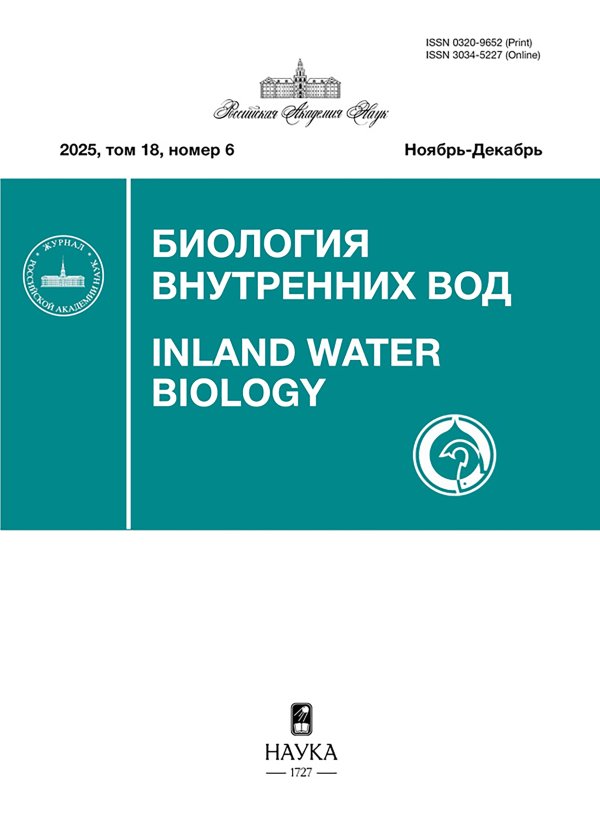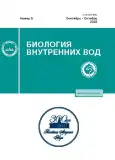First Find of the Invasive Amphipod Gmelinoides fasciatus in the Basin of Lake Vodlozero (Russia)
- Authors: Baryshev I.A.1
-
Affiliations:
- Institute of Biology, Karelian Research Center of the Russian Academy of Sciences
- Issue: No 5 (2023)
- Pages: 647-649
- Section: Articles
- URL: https://journals.rcsi.science/0320-9652/article/view/134902
- DOI: https://doi.org/10.31857/S0320965223050054
- EDN: https://elibrary.ru/REUKME
- ID: 134902
Cite item
Full Text
Abstract
For the first time, the presence of the invasive amphipod Gmelinoides fasciatus (Stebbing, 1899) was established in the watercourse of the basin of Lake Vodlozero (Novguda River, a tributary of the Ileksa River), which is located on the territory of the National Park “Vodlozersky” (North-West Russia). The new habitat is at a considerable distance from the previously known ones. The shortest route through water bodies (Ileksa River–Vodlozero Lake–Sukhaya Vodla River–Vodla River–Onega Lake) is about 180 km. This raises questions about the path and mode of spread of the invasive species. Along with migration through water bodies, it is proposed to consider the version of introduction of amphipods by tourists, in particular fishermen, with equipment or bait. A detailed survey of the littoral zone of Lake Vodlozero is recommended to determine the extent of the invasive settlement.
Keywords
About the authors
I. A. Baryshev
Institute of Biology, Karelian Research Center of the Russian Academy of Sciences
Author for correspondence.
Email: i_baryshev@mail.ru
Russia, Petrozavodsk
References
- Барбашова М.А., Трифонова М.С., Курашов Е.А. 2021. Особенности пространственного распределения инвазивных видов амфипод в литорали Ладожского озера // Рос. журн. биол. инвазий. № 1. С. 13.
- Барышев И.А. 2023. Макрозообентос рек Восточной Фенноскандии. Петрозаводск: Карельск. науч. центр РАН.
- Березина Н.А., Панов В.Е. 2003. Вселение байкальской амфиподы Gmelinoides fasciatus (Amphipoda, Crustacea) в Онежское озеро // Зоол. журн. Т. 82. № 6. С. 731.
- Дгебуадзе Ю.Ю., Петрозян В.Г., Хляп Л.А. 2018. Самые опасные инвазионные виды России (ТОП-100). М.: Тов-во науч. изд. КМК.
- Кауфман З.С. 2011. Некоторые вопросы формирования фауны Онежского и Ладожского озер: Краткий обзор // Тр. Карельск. науч. центра РАН. № 4. С. 64.
- Куликова Т.П., Рябинкин А.В. 2015. Зоопланктон и макрозообентос малых водоемов разных типов ландшафтов южной Карелии // Тр. Карельск. науч. центра РАН. № 6. С. 47. https://doi.org/10.17076/bg25
- Курашов Е.А., Барбашова М.А., Барков Д.В. и др. 2012. Инвазивные амфиподы как фактор трансформации экосистемы Ладожского озера // Росс. журн. биол. инвазий. № 2. С. 87.
- Определитель зоопланктона и зообентоса пресных вод Европейской России. Т. 2. Зообентос. 2016. М.: Тов-во науч. изд. КМК.
- Оценка современного состояния и динамики экосистемы Водлозера в условиях изменившегося гидрологического режима. 2006. Петрозаводск: Ин-т водных проблем Севера Карельск. науч. центра РАН.
- Петрова Л.П., Кудерский Л.А. 2006. Водлозеро: природа, рыбы, рыбный промысел. Петрозаводск: Карельск. науч. центр РАН.
- Савосин Е.С., Кучко Я.А. 2018. Зоопланктон и зообентос озера Гимольское (Западная Карелия) // Рыбов. и рыбн. хоз. № 8 (151). С. 23.
- Baryshev I.A. 2021. Finding of the Invasive Amphipod Gmelinoides fasciatus (Stebbing, 1899) in Watercourses of the Lake Onega Basin // Rus. J. Biol. Invasions. V. 12. № 4. P. 337. https://doi.org/10.1134/S2075111721040020
- Berezina N.A., Zhakova L.V., Zaporozhets N.V., Panov V.E. 2009. Key role of the amphipod Gmelinoides fasciatus in reed beds of Lake Ladoga // Boreal Environ. Res. V. 14. P. 404.
- Schlaepfer M.A., Sax D.F., Olden J.D. 2010. The Potential Conservation Value of Non-Native Species // Conserv. Biol. V. 25. P. 428. https://doi.org/10.1111/j.1523-1739.2010.01646.x
- Walther G.R., Roques A., Hulme P.E. et al. 2009. Alien species in a warmer world – risks and opportunities // Trends in Ecol. and Evol. V. 24. P. 686. https://doi.org/10.1016/j.tree.2009.06.008
Supplementary files











